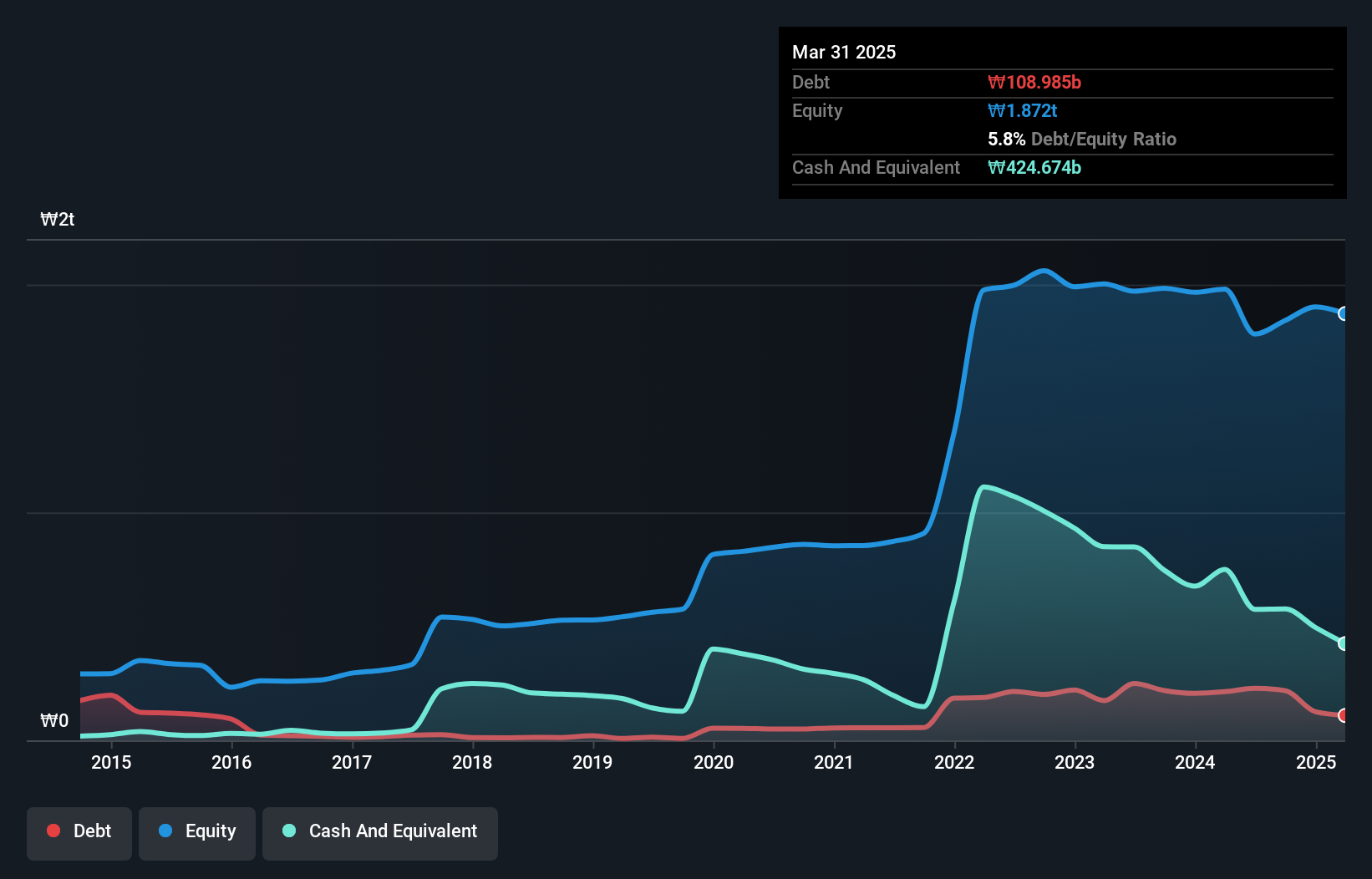- South Korea
- /
- Electronic Equipment and Components
- /
- KOSE:A020150
Is Lotte Energy Materials (KRX:020150) Using Debt In A Risky Way?
Howard Marks put it nicely when he said that, rather than worrying about share price volatility, 'The possibility of permanent loss is the risk I worry about... and every practical investor I know worries about.' It's only natural to consider a company's balance sheet when you examine how risky it is, since debt is often involved when a business collapses. Importantly, Lotte Energy Materials Corporation (KRX:020150) does carry debt. But the real question is whether this debt is making the company risky.
What Risk Does Debt Bring?
Generally speaking, debt only becomes a real problem when a company can't easily pay it off, either by raising capital or with its own cash flow. If things get really bad, the lenders can take control of the business. However, a more usual (but still expensive) situation is where a company must dilute shareholders at a cheap share price simply to get debt under control. By replacing dilution, though, debt can be an extremely good tool for businesses that need capital to invest in growth at high rates of return. The first thing to do when considering how much debt a business uses is to look at its cash and debt together.
What Is Lotte Energy Materials's Debt?
As you can see below, Lotte Energy Materials had ₩109.0b of debt at March 2025, down from ₩213.4b a year prior. However, it does have ₩424.7b in cash offsetting this, leading to net cash of ₩315.7b.

A Look At Lotte Energy Materials' Liabilities
The latest balance sheet data shows that Lotte Energy Materials had liabilities of ₩106.9b due within a year, and liabilities of ₩265.3b falling due after that. On the other hand, it had cash of ₩424.7b and ₩226.0b worth of receivables due within a year. So it actually has ₩278.5b more liquid assets than total liabilities.
This excess liquidity suggests that Lotte Energy Materials is taking a careful approach to debt. Because it has plenty of assets, it is unlikely to have trouble with its lenders. Succinctly put, Lotte Energy Materials boasts net cash, so it's fair to say it does not have a heavy debt load! There's no doubt that we learn most about debt from the balance sheet. But ultimately the future profitability of the business will decide if Lotte Energy Materials can strengthen its balance sheet over time. So if you want to see what the professionals think, you might find this free report on analyst profit forecasts to be interesting.
See our latest analysis for Lotte Energy Materials
In the last year Lotte Energy Materials had a loss before interest and tax, and actually shrunk its revenue by 7.7%, to ₩819b. That's not what we would hope to see.
So How Risky Is Lotte Energy Materials?
Statistically speaking companies that lose money are riskier than those that make money. And the fact is that over the last twelve months Lotte Energy Materials lost money at the earnings before interest and tax (EBIT) line. Indeed, in that time it burnt through ₩19b of cash and made a loss of ₩39b. While this does make the company a bit risky, it's important to remember it has net cash of ₩315.7b. That kitty means the company can keep spending for growth for at least two years, at current rates. Even though its balance sheet seems sufficiently liquid, debt always makes us a little nervous if a company doesn't produce free cash flow regularly. For riskier companies like Lotte Energy Materials I always like to keep an eye on the long term profit and revenue trends. Fortunately, you can click to see our interactive graph of its profit, revenue, and operating cashflow.
At the end of the day, it's often better to focus on companies that are free from net debt. You can access our special list of such companies (all with a track record of profit growth). It's free.
New: AI Stock Screener & Alerts
Our new AI Stock Screener scans the market every day to uncover opportunities.
• Dividend Powerhouses (3%+ Yield)
• Undervalued Small Caps with Insider Buying
• High growth Tech and AI Companies
Or build your own from over 50 metrics.
Have feedback on this article? Concerned about the content? Get in touch with us directly. Alternatively, email editorial-team (at) simplywallst.com.
This article by Simply Wall St is general in nature. We provide commentary based on historical data and analyst forecasts only using an unbiased methodology and our articles are not intended to be financial advice. It does not constitute a recommendation to buy or sell any stock, and does not take account of your objectives, or your financial situation. We aim to bring you long-term focused analysis driven by fundamental data. Note that our analysis may not factor in the latest price-sensitive company announcements or qualitative material. Simply Wall St has no position in any stocks mentioned.
About KOSE:A020150
Lotte Energy Materials
Produces and sells elecfoils in Korea and internationally.
High growth potential with mediocre balance sheet.
Market Insights
Weekly Picks

THE KINGDOM OF BROWN GOODS: WHY MGPI IS BEING CRUSHED BY INVENTORY & PRIMED FOR RESURRECTION


Why Vertical Aerospace (NYSE: EVTL) is Worth Possibly Over 13x its Current Price


The Quiet Giant That Became AI’s Power Grid
Recently Updated Narratives

Rocket Lab USA Will Ignite a 30% Revenue Growth Journey


Dollar general to grow


Mastersystem Infotama will achieve 18.9% revenue growth as fair value hits IDR1,650
Popular Narratives


MicroVision will explode future revenue by 380.37% with a vision towards success


NVDA: Expanding AI Demand Will Drive Major Data Center Investments Through 2026





